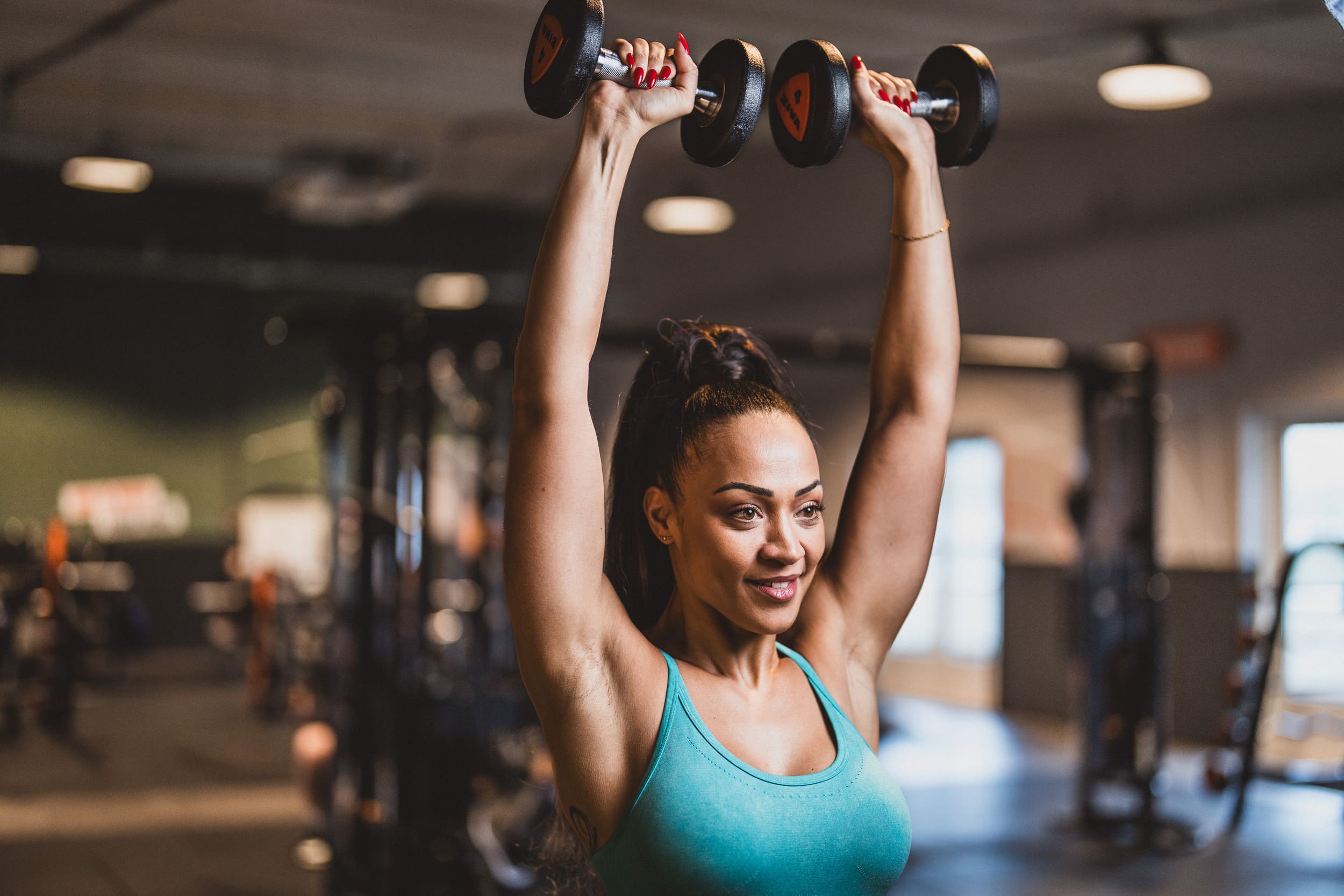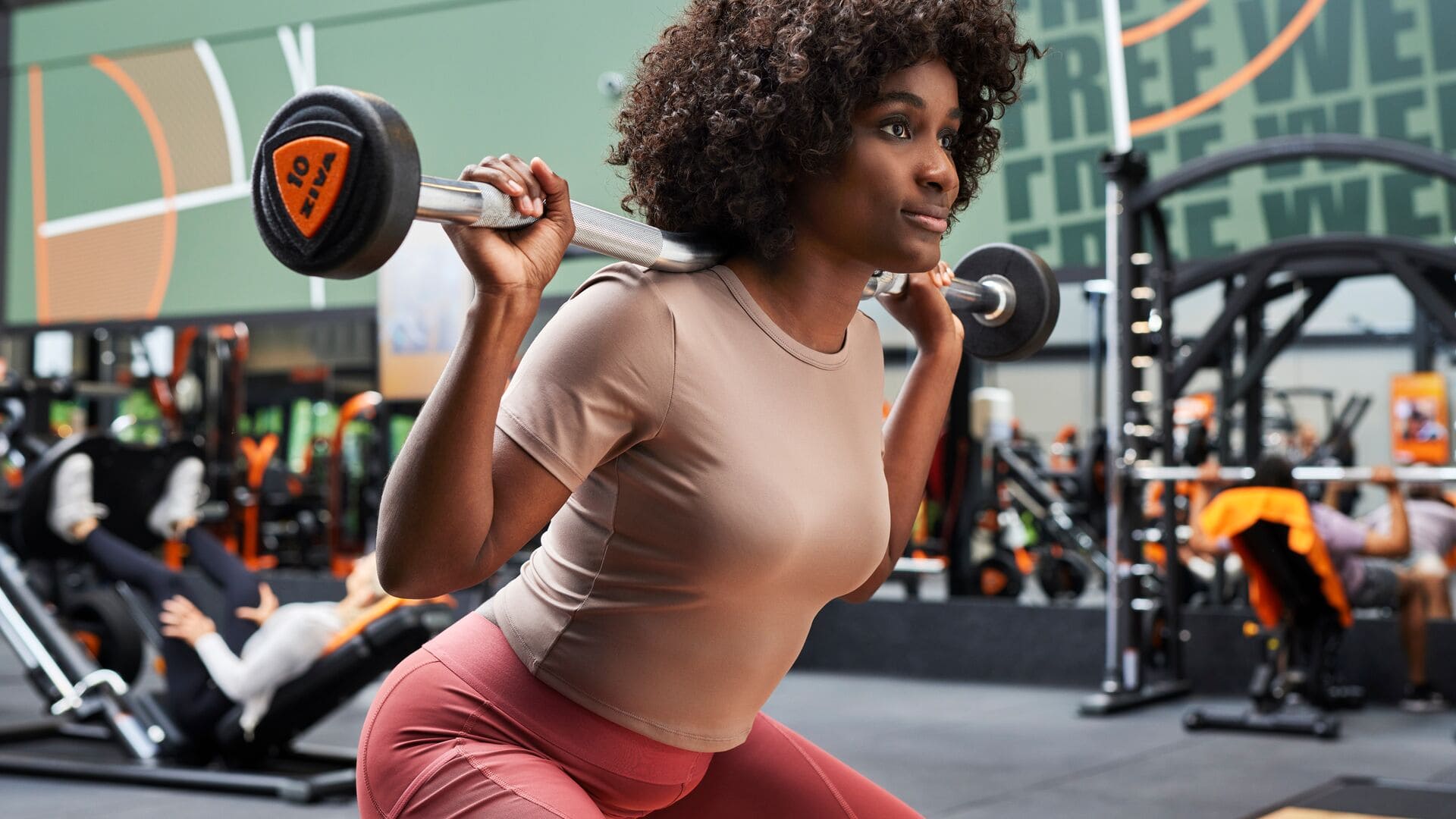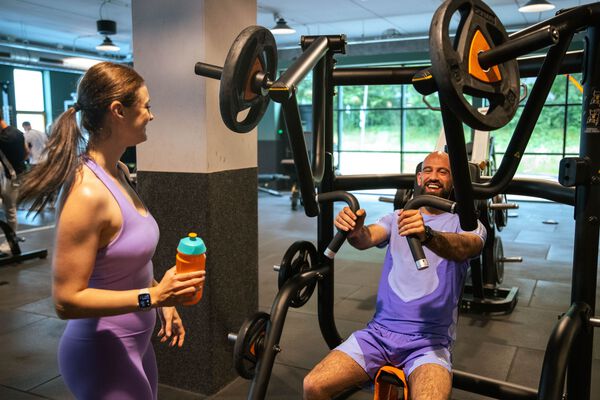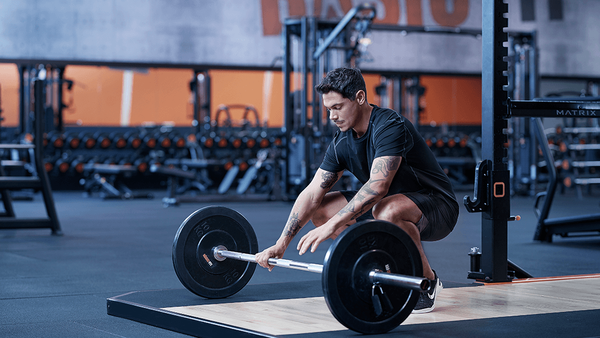Strength training is one of the best things you can do for your body. It builds muscle, protects your joints, and helps keep your bones strong as you age. This is especially important for women, since bone loss tends to increase over time due to hormonal and physiological changes.
In this guide, you’ll get simple, supportive steps to start strength training with confidence and make it part of your routine.
Benefits of strength training
Strength training doesn’t only change how your body looks, but also how you move and feel in your daily life.
- Helps build lean, defined muscle
- Supports healthy aging by improving memory and reduces risk of cognitive decline
- Strength training has shown to lower cortisol (your stress hormone), making it a powerful and natural way to relieve stress.
- Improves posture and confidence.
- Supports better sleep and deep rest.
- Provides strength at every stage of life (including pregnancy, postpartum, and menopause).
Training your muscles helps balance your energy, reduce stress, and leave you feeling proud of what your body can do.

Common myths of strength training
Strength training has become more popular, but outdated beliefs still linger, especially for women. These myths can hold you back from training in a way that supports your health, strength, and confidence. Let’s debunk some of the most common one.
Myth 1: "Lifting makes you bulky"
Most women don’t produce enough testosterone to build large muscle mass naturally. Strength training helps develop lean muscle that supports strength, shape, and long-term health.
Myth 2: “Women should stick to light weights and high reps
While lighter weights can build endurance and support recovery, they don’t challenge your muscles enough to build muscle mass. Lifting heavier weights (with proper form) activates more muscle fibres, strengthens bones, and leads to greater long-term progress.
Myth 3: "Cardio is the only way to lose fat"
Cardio and strength training both help with fat loss, but they tap into different energy systems. Cardio uses more immediate fuel during the session. Strength training builds muscle, which helps your body burn more energy at rest. This rise in resting metabolism means you continue using energy long after your workout ends.
Myth 4: "Weights reduce flexibility"
With proper technique, strength training actually improves flexibility and joint mobility. Exercises such as squats, lunges, and overhead presses help your muscles stay strong and your joints stay mobile. This works best when you move with control and use the full range of motion.

Your beginner-friendly strength training routine
A good strength routine doesn’t have to be complicated. That’s why we designed a beginner-friendly workout to help you learn the basics, get used to the movements, and ease into strength training at your own pace.
The session consists of seven exercises and takes 35 to 40 minutes to complete. You can do it at the gym or at home. Do this workout two or three times per week, leaving at least one rest day between sessions. Bring water and rest for 60 to 90 seconds between sets.
What you'll need:
- A set of light dumbbells or water bottles
- A bench, box, or sturdy chair
- A mat or soft floor space
- A timer

Quick warm-up (5 minutes)
Do 3–5 minutes of simple moves like marching in place, arm circles, and hip rolls to get your body ready.
Body-weight squat
Targets: Quads, glutes, core
Stand with feet just wider than shoulder-width. Push your hips back like you’re lowering yourself into a chair. Lower until thighs are nearly parallel to the floor, then press through your heels to return to standing. Keep your chest lifted and eyes forward.
Do 3 rounds of 10 repetitions.
- You can also: Sit down onto a box or bench, then stand up again if you need extra stability.
Incline push-up (hands on a bench)
Targets: Chest, shoulders, triceps, core
Place your hands on a secure bench and step your feet back until your body forms a straight line. Lower your chest toward the bench by bending your elbows. Pause, then press back up while keeping your core tight.
Do 3 rounds of 8 repetitions.
- You can also : Begin with hands on a wall for an easier angle
Dumbbell hip bridge
Targets: Glutes, hamstrings, lower back
Lie on your back with knees bent and feet flat. Rest a light dumbbell across your hips. Press through your heels to lift your hips until your body forms a straight line from shoulders to knees. Squeeze your glutes at the top, then lower slowly.
Do 3 rounds of 12 repetitions.
- You can also: Perform the bridge without a dumbbell until you feel steady.
Dumbbell Romanian deadlift
Targets: Hamstrings, glutes, lower back
Stand with feet hip-width, holding two light dumbbells in front of your thighs. Soften your knees, push your hips back, and lower the weights along your legs. Keep your spine long. When you feel a stretch in the backs of your legs, drive your hips forward to return to standing.
Do 3 rounds of 10 repetitions.
- You can also : Practise the hinge with no weight, hands on hips, to lock in the pattern.
One-arm dumbbell row
Targets: Upper back, lats, rear shoulders
Place your left knee and hand on a bench, with your right foot on the floor. Hold a dumbbell in your right hand, arm extended. Pull your elbow back toward your hip, squeezing your shoulder blades together. Lower slowly. Switch sides after reps.
Do 3 rounds of 10 repetitions per arm.
- You can also: Use a lighter weight, or loop a resistance band under your foot and row with the handle for a similar movement.
Half-kneeling overhead dumbbell press
Targets: Shoulders, triceps, core stability
Kneel with your left knee down and right foot forward. Hold a dumbbell at your right shoulder. Brace your core and press the weight overhead until your arm is next to your ear. Lower slowly. Switch sides after reps.
Do 3 rounds of 8 repetitions per arm.
- You can also : Press from a seated position if kneeling feels unstable.
Suitcase carry
Targets: Core, grip, posture muscles
Hold a dumbbell or kettlebell at your side with one hand. Stand tall and walk 20–25 metres, keeping your shoulders level and core engaged. Switch hands and walk back.
Do 2 rounds per side.
- You can also: Shorten the distance to 10 m if space is limited.

Simple progression tips
- Control every rep with a 2-1-2 tempo: lower for two counts, pause for one, lift for two.
- Start with a load that lets you finish every set while keeping form solid.
- When the last 2 reps feel too easy, add 1 to 2 kg or two reps in the next session.
- Record loads and reps in the Basic-Fit app to keep track of your progress.
- Sleep, water, and a balanced plate will help your muscles recover and grow.
Pilates and yoga can also support strength training. They focus more on control, stability, and mobility, especially in your core. While they don’t build muscle the same way lifting does, they’re great for improving posture, movement, and body awareness, and they work well alongside a regular strength routine.
Stay consistent, celebrate each workout, and remember: every rep is a step toward a stronger you.

Find inspiration and support
You’ll find many more workouts like this in the Basic-Fit app. Whether you’re looking for structure, ideas, or a bit of motivation, the app offers all the tools you need to build a routine and stick to it.
Here’s how it can support your training:
- Choose from ready-made programs for beginners, full-body, or muscle-specific training
- Set a personal training goal and track your sessions over time
- Try full video workouts like strength or Pilates, either at home or on the screen in the club
- Follow simple video demos to learn exercises step by step
- Log your workouts and get reminders to stay on track
GO FOR IT!




